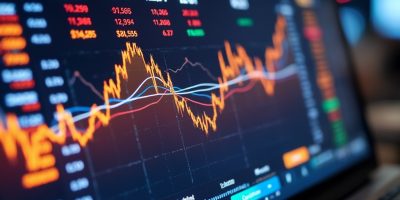The expected alpha of a trading or investing strategy can decrease significantly due to tail events, or even become negative. If there are risks of large losses, there is a high probability that the realized alpha will be much lower than expected.
Nassim N. Taleb, in a Bloomberg interview on the importance of probability, said this about alpha:
Your strategy does not have the alpha you think it has.
Elaborating further, Nassim N. Taleb argued that if the probability of ruin is not zero, you cannot even talk about alpha. You can search for the video; it is a must-watch.
What is alpha? There are two types of alphas: “simple” and “quantitative.” The “simple” alpha is the difference between the strategy and the benchmark returns, also referred to as the excess return. If the strategy’s annualized return is 10% and the benchmark’s annualized return is 8%, then some people claim the alpha is 2%. However, this does not account for risk.
The Capital Asset Pricing Model (CAPM) provides the following quantitative definition of alpha:
Alpha = r – [Rf – beta×(Rm – Rf)] (1)
where r is the strategy return, Rm is the market return, and Rf is the risk-free return. Beta is a measure of the strategy’s risk in comparison to the benchmark. In the above equation, the alpha is the strategy return minus the risk-adjusted return, which is equal to the expression in the brackets.
If beta is 1, then the strategy and the market share the same level of risk, and the equation yields alpha as the excess return. If beta is less than 1, then alpha increases, and if beta is greater than 1, it decreases. All other things being equal, lower beta means higher alpha. If beta is zero, which is the objective of beta-neutral strategies, then the strategy return is pure alpha, assuming the risk-free return is 0.
During the quantitative easing years with rates at 0%, there was a rush to develop beta-neutral strategies that would offer pure alpha. Most of the attempts were unsuccessful. Managed futures come close to being beta-neutral. However, during a “lost decade” from 2009 to 2018, these strategies failed to generate a reasonable level of alpha. Some quants have questioned whether true beta-neutral strategies are possible at all.
While portfolio managers aim to create strategies that yield alpha, they often underestimate the level of risk. That was one of the points Nassim N. Taleb made in the Bloomberg interview. On average, hedge funds have not outperformed a simple 12-month moving average applied to the S&P 500 index total return (SPY). Since 2007, the long-only 12-month simple moving average (1M12) has outperformed the Eurekahedge 50 index by a wide margin.
| 1M12 (SPY ETF) | Buy and Hold | Eurekahedge 50 Index | |
| Annualized return | 7.6% | 9.8% | 5.2% |
| Maximum Drawdown | -22.6% | -55.2% | -22.6% |
| Sharpe | 0.6 | 0.49 | 0.56 |
While both the 1M12 and the Eurekahedge 50 index underperform buy and hold on an excess return basis, the simple moving average strategy has a slightly higher Sharpe. The difference in annualized return is large: 7.6% for the simple moving average versus 5.2% for hedge funds. Due to high dispersion, some hedge funds have outperformed 1M12, but on average, they have underperformed by a wide margin.
When alpha and beta for that purpose, are random variables in a stochastic process, it makes little sense to talk about alpha. Alpha will vanish over time in the presence of tail events, while beta will increase. The ARKK ETF, from inception to its peak on February 12, 2021, and from inception to April 4, 2024, is a good example. We assume a risk-free rate of return equal to 0%.
| Inception to February 12, 2021 | Inception to April 4, 2024 | |
| Annualized return | 40.2% | 10.4% |
| Sharpe | 1.36 | 0.28 |
| Beta | 1.19 | 1.46 |
| Alpha | 15.6% | 0.2% |
The Sharpe ratio plunged from 1.36 to 0.28. Beta rose from 1.19 to 1.46, and alpha vanished, from 15.6% to just 0.2%. This example illustrates the random nature of alpha, beta, and, consequently, fund performance. Tail events, in this particular case rising rates affecting high duration stocks, diminished any alpha expectations. The same can happen to any fund, ARKK is not an exception. Furthermore, the concept of an “all-weather” fund could be a pipe dream. Simple indicators can perform better or even be more robust than complicated schemes that try to extract alpha from the markets, because “Your Strategy Does Not Have the Alpha You Think It Has,” as Nassim. N. Taleb has claimed.
Premium Content
20% perpetual discount with code PA20
Premium articles, Market signals, and All-in-One subscriptions
This offer will expire on April 8, 2024, at midnight.
By subscribing, you have immediate access to hundreds of articles. Premium Articles subscribers have immediate access to more than two hundred articles, and All in One subscribers have access to all premium articles, books, premium insights, and market signal content.
Specific disclaimer: This report includes charts that may reference price levels determined by technical and/or quantitative analysis. No charts will be updated if market conditions change the price levels or any analysis based on them. All charts in this report are for informational purposes only. See the disclaimer for more information.
Disclaimer: No part of the analysis in this blog constitutes a trade recommendation. The past performance of any trading system or methodology is not necessarily indicative of future results. Read the full disclaimer here.
Charting and backtesting program: Amibroker. Data provider: Norgate Data
If you found this article interesting, you may follow this blog via RSS, Email, or Twitter.







